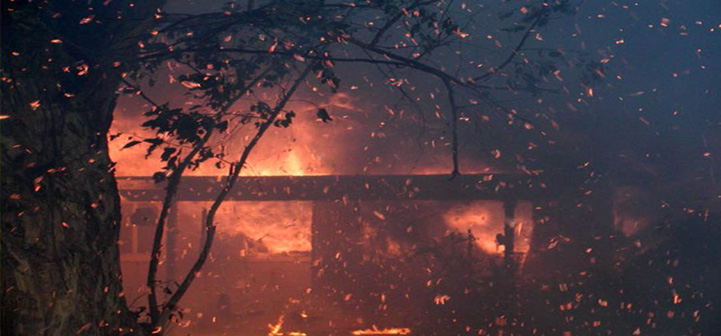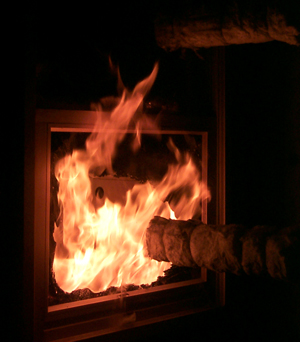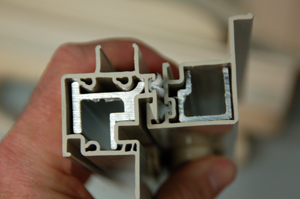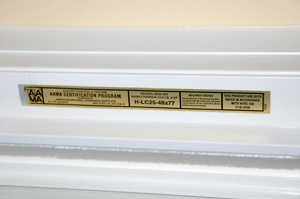Article Written by:
Stephen L. Quarles, Senior Scientist, Insurance Institute for Business & Home Safety, Richburg, SC
During a wildfire, windows can be exposed to both radiant heat and direct flame contact exposures. Because wind-blown embers (firebrands) can travel up to a mile or more in front of the wildfire, when a wildfire threatens, windows will be exposed to embers. Therefore, the most vulnerable window when a wildfire threatens is one that is left open. Particularly with unscreened windows, embers will enter the home, potentially igniting interior furnishings (carpet, furniture, etc.).
Windows subjected to a radiant heat or direct flame contact exposure can fail if the framing material ignites or if the glass breaks. In either case, the fire is able to move from the outside to the inside of the house. As the heat from a wildfire increases, glass will break as a result of temperature differences between the glass you can see through and the glass that is protected by the framing material.
Research has shown that glass is the most vulnerable part of the window. This finding only applies to the annealed and tempered glass commonly found in residential construction. If you have more expensive types of glass such as ceramic or a dual pane / intumescent filled unit, then failure from frame ignition would be a more likely scenario. From a fire performance perspective, tempered glass is much stronger and therefore performs much better than annealed glass when exposed to heat. Use of multi-layered glazing — for example, two or more pieces of glass in the window unit, such as a dual pane insulated glass unit — with tempered glass would be an affordable way to improve the ability of windows to better resist wildfire exposures. With glass being the most vulnerable part of the window, frame material can be selected based on aesthetic, cost or other performance issues.
Under certain conditions, the vinyl frame can deform under radiant heat and direct flame exposures the inside of the home much sooner than that required to break the glass. The window fails when the deformed frame allows the glass to fall out completely or a gap between glass and frame develops. The most significant problem is with windows that have a horizontal separator — that is, a hung window — or vertical separator — a slider window — in the middle of the window. Research has shown that as long as the horizontal or vertical separator member has an internal reinforcement bar, the deformation won’t take place. Vinyl windows that are certified to comply with the AAMA/WDMA/CSA 101/I.S.2/A440 Standard/Specification possess this feature. Look for labeled products indicating this certification.
Creating and maintaining good defensible space around your home, particularly in the 0 to 5 ft zone (sometimes referred to as the noncombustible or low-combustible zone), will reduce the amount of heat that your window could be exposed to.







